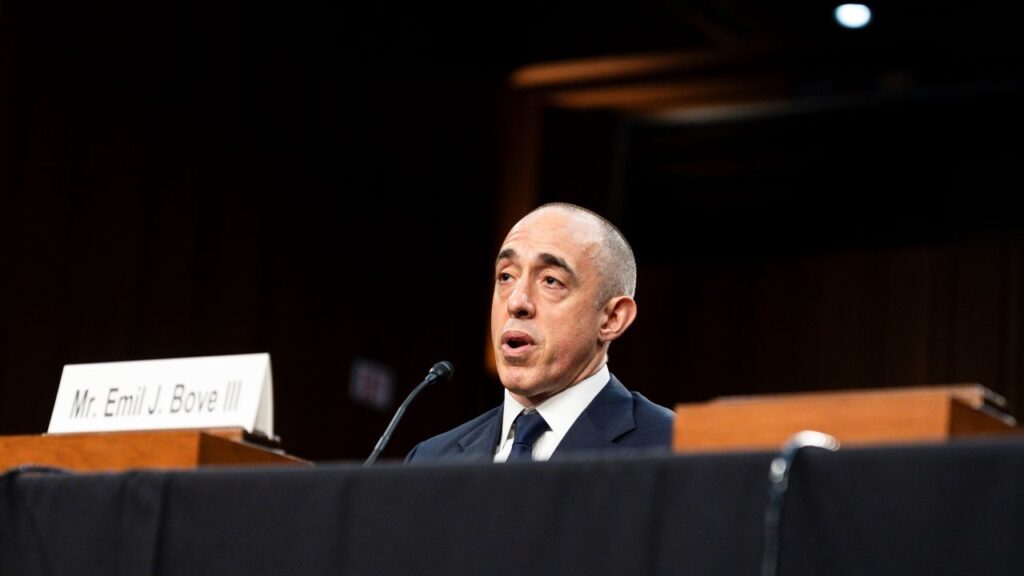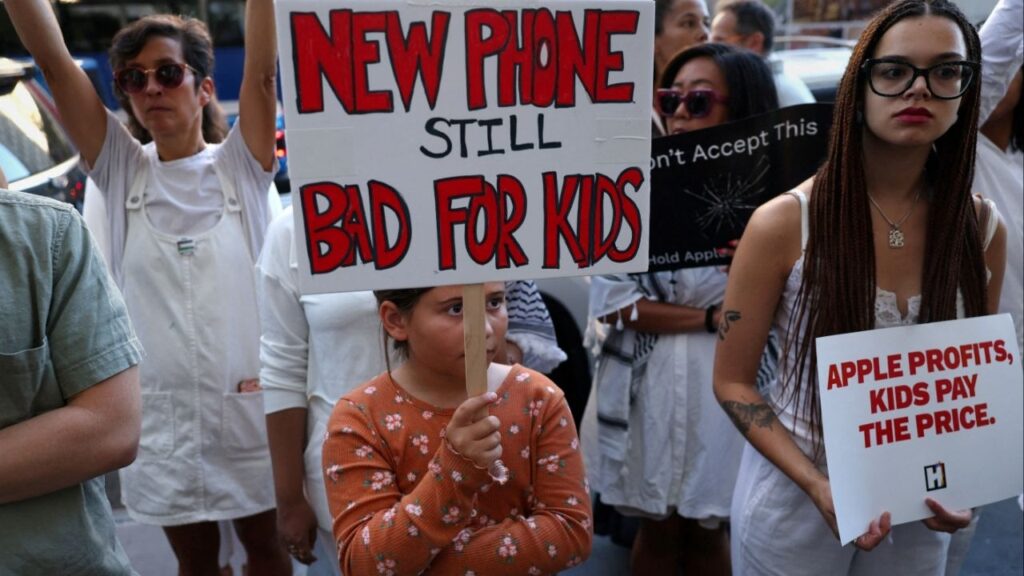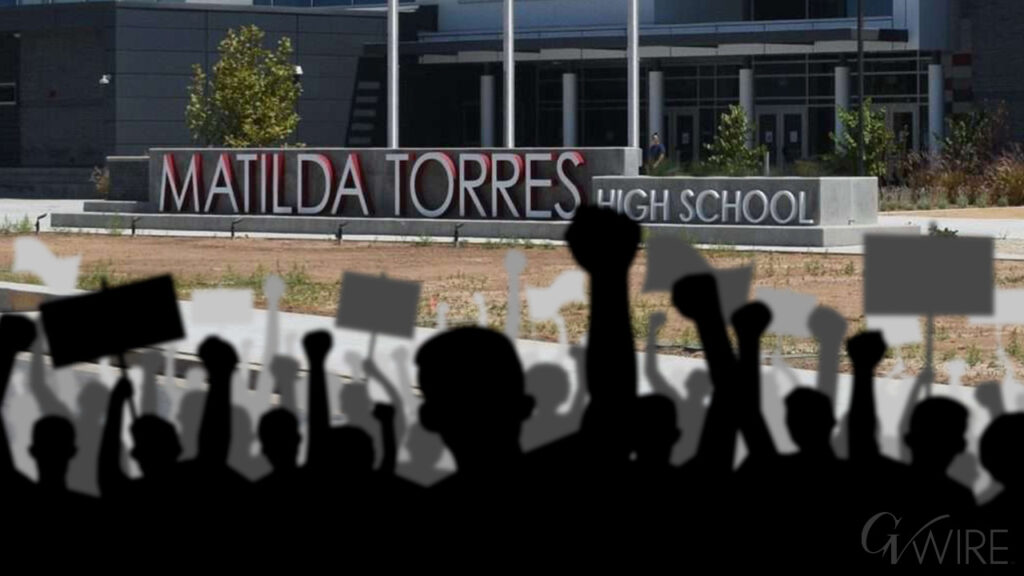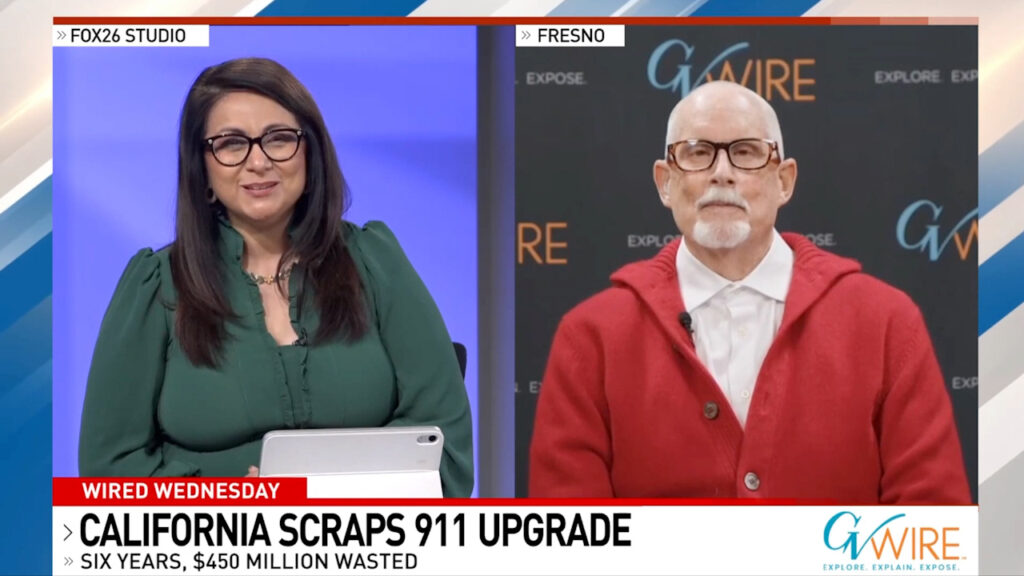President Donald Trump speaks to reporters after scouting a location for a flagpole for an American flag on the North Lawn of the White House in Washington, Wednesday, April 23, 2025. Trump’s encounter with reality after weeks of bluster and escalation amounted to a vivid case study in the political and economic costs of striking the hardest of hard lines. (Haiyun Jiang/The New York Times)

- Trump backed off threats to fire the Fed chair and acknowledged high tariffs on Chinese goods were unsustainable.
- Retail executives warned Trump of price surges and empty shelves due to the proposed 145% tariffs on Chinese goods.
- The administration insists its maximalist demands are strategic, but critics point to market instability and miscalculations.
Share
After weeks of bluster and escalation, President Donald Trump blinked. Then he blinked again. And again.
He backed off his threat to fire the Federal Reserve chair. His treasury secretary, acutely aware that the S&P 500 was down 10% since Trump was inaugurated, signaled he was looking for an offramp to avoid an intensifying trade war with China.
And now Trump has acknowledged that the 145% tariffs on Chinese goods that he announced just two weeks ago are not sustainable. He was prompted in part by the warnings of senior executives from Target, Walmart,and other large American retailers that consumers would see price surges and empty shelves for some imported goods within a few weeks.
A Retreat From Threats
Trump’s encounter with reality amounted to a vivid case study in the political and economic costs of striking the hardest of hard lines. He entered this trade war imagining a simpler era in which imposing punishing tariffs would force companies around the world to build factories in the United States.
He ends the month discovering that the world of modern supply chains is far more complex than he bargained for, and that it is far from clear his “beautiful” tariffs will have the effects he predicted.
This is not, of course, the explanation of the events of the past few days that the White House is putting out. Trump’s aides insist that his maximalist demands have been an act of strategic brilliance, forcing 90 countries to line up to deal with the president. It may take months, they acknowledge, to see the concessions that will result. But bending the global trade system to American will, they say, takes time.
Related Story: Trump Tells Putin to ‘STOP’ After Russian Attacks Kills 10 in Kyiv
White House Defends Strategy
“Have some patience and you will see,” the president’s press secretary, Karoline Leavitt, told reporters Wednesday.
Trump insisted to reporters at the White House that everything was going according to plan.
“We have a lot of action going on,” he said, repeating his now-familiar line that “we’re not going to be a laughingstock that got taken advantage of by virtually every country in the world.” He suggested again that the United States needed to return to the halcyon era from 1870 to 1913 — the year the country began to impose income taxes — when tariffs funded the government and “we had more money than anybody.”
And he repeated his prediction that “now we’re going to be making money with everyone, and everyone’s going to be happy.”
But happy did not seem to be the vibe around the White House in recent days.
It started with Trump’s declaration that the “termination” of Fed Chair Jerome Powell, whom he appointed in 2017, “cannot come fast enough.” His most senior economic adviser, Kevin Hassett, went further, saying the administration was looking at the legal options to remove him.
Trump’s complaint is that Powell will not cut interest rates, for fear of stoking inflation. But the president was clearly concerned about the warnings from economists that the country could be headed to recession — one of his own making, one that his critics are trying to label the Trump Slump even before it happens.
The tone of his comments seemed to suggest that if recession does come, the blame will fall on Powell.
But once Trump declared “if I want him out, he’ll be out of there real fast, believe me,” another market sell-off began. It made little difference that he doesn’t have the power to dismiss the Fed chair, as Powell has noted in recent days. The mere threat of it seemed to accelerate the sense that the United States has become the biggest source of market instability in the world.
Then, on Tuesday, Trump changed his tune. “I have no intention of firing him,” Trump said of Powell. That didn’t stop him from continuing his critique of Powell as “Mr. Late” with rate cuts, but it was enough to reverse the market sell-off.
Related Story: Trump Says Immigrants Shouldn’t Get Trials Before Deportation
China Strategy Faces Challenges
The next walk-back came with China.
The White House kept hinting that the Chinese were beginning to negotiate, seeking a way to end the tariffs. In fact, the strategy that Beijing appeared to be following was to wait for Trump to feel the pain of his own actions. The expected phone call from President Xi Jinping never came. And Trump didn’t want to be the first to call, either — a sign of desperation.
In private, some Trump officials concede that they did not accurately predict China’s reaction. Trump seemed to expect China to be among the first to come begging for relief, given the size of its exports to the United States.
“Back in 2017, the first time Trump imposed tariffs on China, Beijing was caught by relative surprise,” Nicholas Mulder, an economic historian at Cornell University, said Wednesday. “But they have been preparing for further escalation for many years,” he said. Now, “they have much more tolerance for economic pain, and a greater ability to weather this ratcheting up.”
By late Tuesday, Trump was publicly mulling lowering the Chinese tariffs, saying “145% is very high, and it won’t be that high, not going to be that high.” He added, “It got up to there,” as if the number had floated to that height by itself.
Other powers are clearly watching the Chinese approach and taking notes. Xi’s closest ally, President Vladimir Putin of Russia, is engaged in his own high-stakes negotiation with the United States, over Ukraine. Iran is in the midst of talks about its nuclear program. They are looking for signs of weakness, or little indications of what could test Trump’s nerves.
Elizabeth Economy, who has written extensively about Chinese trade policy and served in the Commerce Department during the Biden administration, said the Trump team appeared to have ignored three fundamentals about China: the depth of the Chinese retaliatory tool kit; the extent of China’s economic leverage over the United States; and the ability of Xi to make the United States the scapegoat for China’s economic ills.
“This game of chicken has done nothing but enable Xi Jinping to boost his standing in and outside China, while the United States appears uninformed and unmoored,” she said.
—
This article originally appeared in The New York Times.
By David E. Sanger / Haiyun Jiang
c. 2025 The New York Times Company
RELATED TOPICS:
Categories

Fresno Train-Vehicle Collision Causes Traffic Disruptions
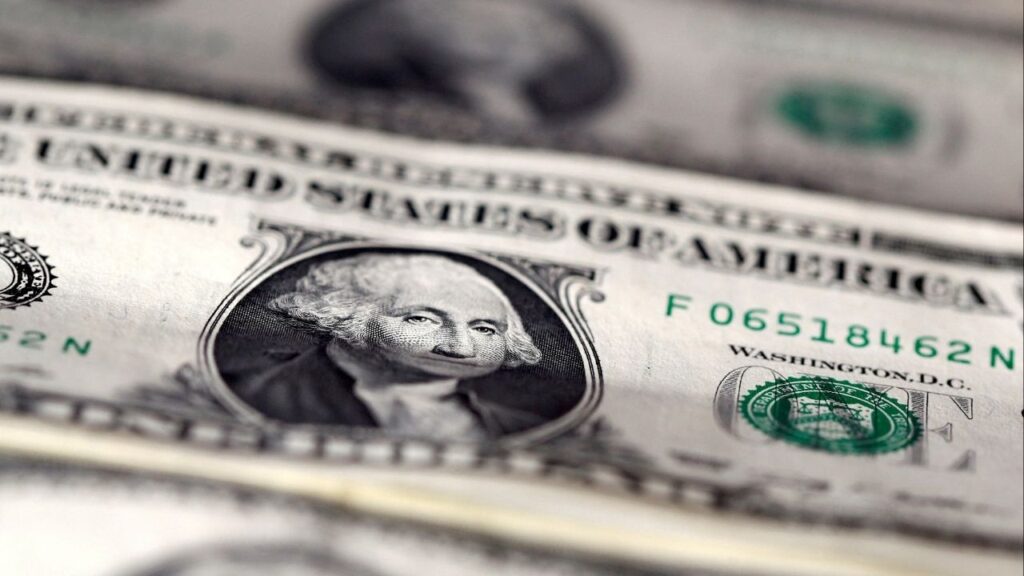
US Dollar Tumbles After Fed Cuts Rates, Powell Comments






